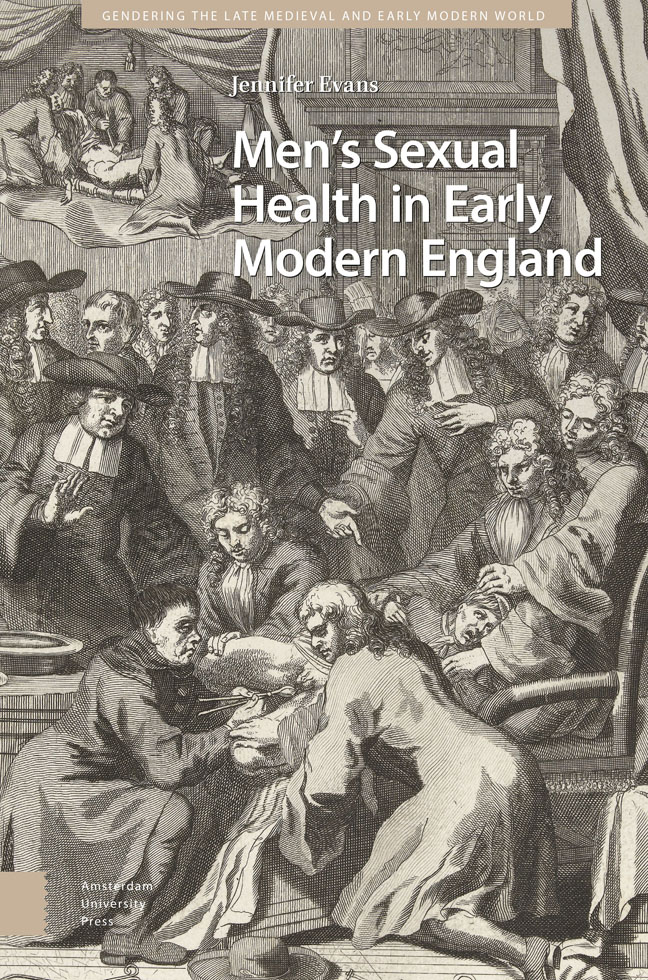Introduction
Published online by Cambridge University Press: 20 February 2024
Summary
Abstract: This introduction outlines the scope and key questions driving the study. It situates the findings within the broader historical discussion of men's sexual health and introduces the main bodies of primary source materials used.
Keywords: masculinity; sexual health; men's health; genitourinary conditions; medical texts
In the summer of 1723 Mr Jeffrys of Box in Wiltshire, five miles northeast of Bath, sought the help of the surgeon William Thornhill in Bristol for his troubling bladder stones. He had a stone weighing three ounces and one drachm removed and began the process of recovery. During this time he developed significant chafing of the upper part of the penis and of the scrotum caused by the acridity of his urine which corroded the skin. No topical applications provided relief and eventually he declared that ‘he would have chose to be cut every Day rather than bear it, and that it was more intolerable than any Fit of the Stone’. During this time of discomfort Jeffrys decided that the advice he had received was making his condition worse and so prevailed upon his nurse to substitute the ‘small Liquors’ he was drinking for some wine. He imbibed too freely and became a ‘little over-taken with it’, causing further pain and uneasiness in his wounds for two days. Following this episode, he saw the error of his ways, adhered to his medical regime diligently, and was eventually sent home ‘in a better State of Health than ever he had possess’d in his Remembrance’.
Mr Jeffrys's case would have been familiar to readers of medical texts in the early modern period. He sought help for a condition discussed with relative freedom and ease, developed secondary problems as a result of the treatment, attempted to assert authority over his own body and remedies, and finally relented and resigned himself to following the advice of his medical practitioners, resulting in complete cure and lasting health. This book explores the experiences of men like Mr Jeffrys in early modern England who suffered from a range of genitourinary complaints including hernias, venereal disease, and bladder stones. These were relatively common conditions for men in the early modern era, although it can be difficult to establish their prevalence for certain. As Lucinda McCray Beier explained, the bills of mortality obscured the rates of death from venereal disease, where ulcers and consumption were often recorded instead.
- Type
- Chapter
- Information
- Men's Sexual Health in Early Modern England , pp. 11 - 36Publisher: Amsterdam University PressPrint publication year: 2023

